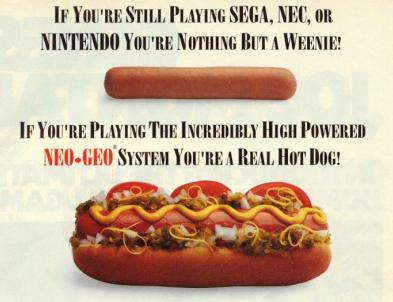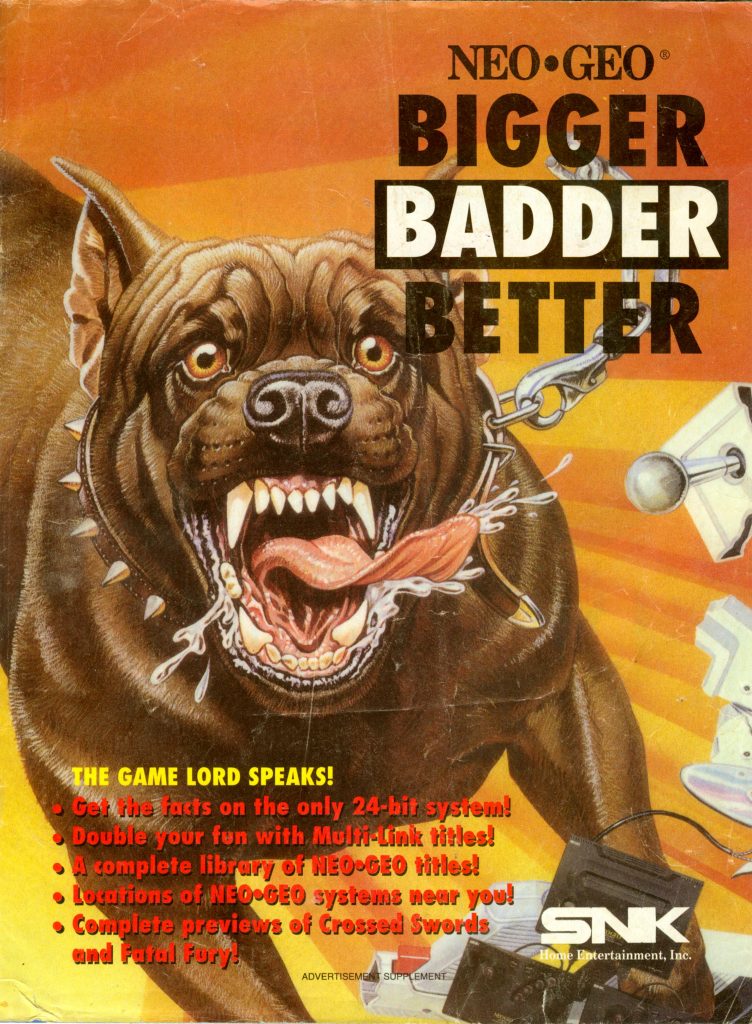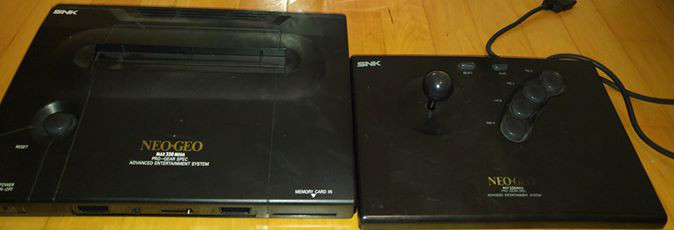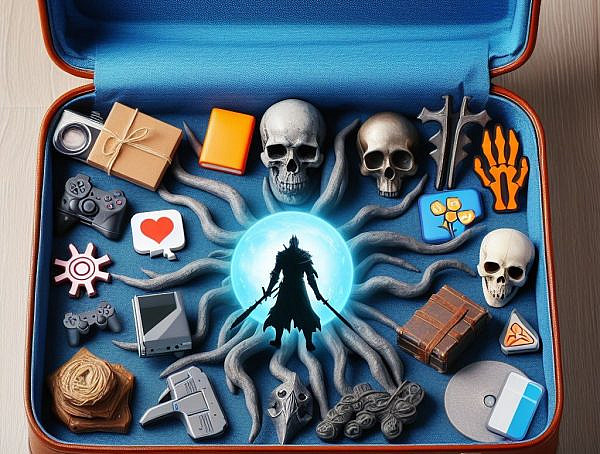Domesticating the arcade experience: the story of Neo Geo
The SNK Neo Geo AES console, released in 1991, bridged the gap between arcade and console gaming. The exorbitantly priced system could play “arcade perfect” home console versions of SNK’s arcade games. Due its high price tag, most gamers could only dream about the system. Due to its image as a luxury item, the system developed a cult following over the years. Now all but the most common games released for it are highly valued collector’s items, with many titles median price exceeding the 1000 dollar/euro mark.
Benjamin Nicoll’s article “Briding the Gap: The Neo Geo, the Media Imaginary, and the Domestication of Arcade Games”, analyzes how North American and British game magazines covered the Neo Geo AES console, and how its media portrayal changed throughout the early 1990s. He argues that the largely negative reception the console developed over time is indicative of a change that occurred in the gamer culture of the era, as arcade gaming fell from grace. The article focuses on the concept of imaginaries, the idea that the marketing of, as well as the discourse surrounding technological products often projects a certain kind of idealized or altered image, which shapes their identity as cultural objects. For that purpose, the author turned his attention towards contemporary discourse seen in gaming magazines, as they played an instrumental role in shaping the “gamer identity” and forming gaming lingo during the industry’s formative years.
The systems’ unique position between the arcade and home console markets was a central element in its downfall. The AES console was designed to play the same games as its arcade counterpart Neo Geo MVS. During a time when console versions of arcade games were stripped down, inferior ports of their original versions, that was a major selling point. There was one major downside to the system’s technical prowess however: individual games cost as much as 200-300 dollars.
The system boasted very advanced graphical capabilities compared to its competitors Super Nintendo, Sega Mega Drive and NEC TurboGrafx-16. Those capabilities were featured prominently in the systems advertising. Technical specifications were often highlighted rather than the game selection. One advert read “If you’re still playing Sega, NEC or Nintendo, you’re nothing but a weenie!”
Picture source: 1
This hypermasculine style of advertising games and game consoles through insulting competitors is what the author refers to as “symbolic violence”. The use of symbolic violence in advertisements was common during the post video game crash years (1984 onwards), when the industry started catering products towards young males, whereas prior to the crash, game consoles had featured more age and sex inclusive marketing campaigns. This style of advertising wasn’t exclusive to SNK’s Neo Geo system, but adverts that told readers to “quit whining and grow up” were the norm for the system.
Picture source: 2
The masculine bravado of the advertisement campaigns reflected on the system’s game library as well. The bulk of it consisted of fighting games, many of which were criticized to be derivative copies of another. Beyond that, beat em ups (Sengoku, King of Monsters, Mutation Nation…), shoot em ups (Aero Fighters, Pulstar, Strikers 1945+, Blazing Star…) and sports games (Baseball Stars, Windjammers, Super Sidekicks, Neo Turf Masters…) were also well represented genres. Competitive games were at the forefront, as the system was meant to bring the arcade experience to consumers’ living rooms. Even the controller emulated the arcade experience by being a large joystick, tailor made for fighting games.
This lack of variety, coupled with the high price tag of individual games, was the system’s biggest downfall. Many critics complained that the games lacked long-term value, as many games could be competed in less than an hour. Gaming magazines had started factoring in replay value as a score metric into their reviews, which arcade games could not provide. As the AES’ game library was identical to that of the arcade system, it could not provide players with lengthier, narrative-driven experiences such as role-playing games, which could be found from competing systems. One reviewer remarked that for the price of the game Riding Hero, you could buy a Sega Mega Drive console and a copy of Super Hang-On, an equivalent yet superior game.
While the system succeeded in delivering “arcade perfect” ports to consumers, something was lost in translation from the arcade to the living room. The competitive and social aspects of playing in the arcade were lost, which is another reason why the games had poor value for money. It was cheaper to go to the arcades and play the games there, than to buy the expensive system and games just to get a suboptimal experience.
Original article: http://journals.sagepub.com/doi/abs/10.1177/1555412015590048?journalCode=gaca
Picture sources:
- http://static1.1.sqspcdn.com/static/f/642666/8377975/1283375465103/neo-geo-hotdog.JPG?token=LVr60%2BPRSeEARgKWguH0dLwY4yY%3D
- https://s-media-cache-ak0.pinimg.com/originals/07/42/86/0742865a391a2bf61598b25c78226711.jpg
You might also like
More from Game Research Highlights
How do you want to do this? – A look into the therapeutic uses of role-playing games
Can playing RPGs contribute positively to your wellbeing? A recent study aims to find out how RPGs are being used …
Eldritch horrors and tentacles – Defining what “Lovecraftian” is in games
H.P. Lovecrafts legacy lives today in the shared world of Cthulhu Mythos and its iconic monsters. Prema Arasu defines the …
Are Souls Games the Contemporary Myths?
Dom Ford’s Approaching FromSoftware’s Souls Games as Myth reveals the Souls series as a modern mythology where gods fall, desires …


















